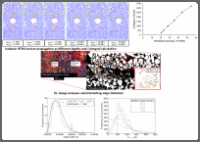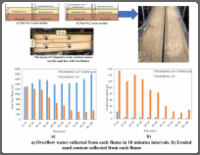| Multi-Physics Models for Proppant Placement in Energy Georeservoirs This NSF project addresses the need for more effective proppant (granular material that keeps the fractures open) usage during geothermal energy recovery. Enhanced Geothermal Systems (EGS) use geothermal energy to produce electricity from hot deep underground permeability-enhanced rock formations. |
|
| ISS: A new paradigm for explaining catastrophic post-wildfire mudflows: transport phenomena and gravity-driven aggregation dynamics of hydrophobic particle-air-water mixtures This NSF-CASIS project will conduct a series of experiments on board the International Space Station (ISS) and on Earth to understand the role of gravity in the dynamics of mudflows. |
|
| Coupled hydro-thermo-mechanical rock modeling using Discrete Element Method This project investigates rock behavior under coupled hydro-thermo-mechanical processes, which are found in deep geothermal reservoirs. Project objectives are to develop and upgrade Discrete Element Method (DEM) capabilities to model coupled processes in rock, which include convective-conductive heat flow and transport, poroelasticity and thermo-poroelasticity. |
|
| Hellman Fellowship Micromechanics of post-wildfire mudflow onset and investigation of single raindrop impact dynamics on water repellent vs. regular slopes. |
|
| Assessment of Maintenance Strategies for Bio-stabilization of Mudslides on Wildfire-affected Slopes This UC ITS Statewide Transportation Research Program funded project develops new bio-stabilization strategies to mitigate mudslides on wildfire affected slopes. |



